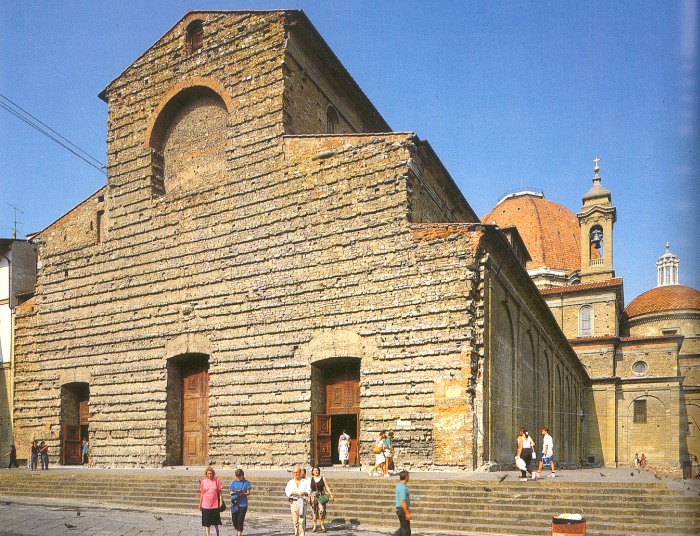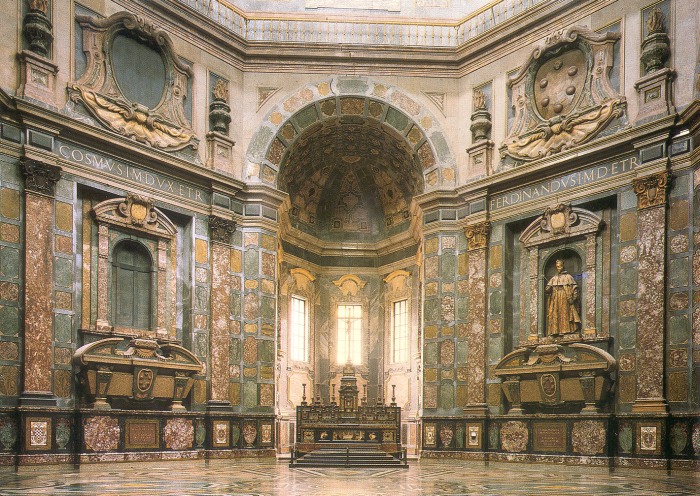(Italian pronunciation: sahn loh-ren-tsoh)


San Lorenzo is one of the most famous churches in Europe and one of the most visited in Florence. This is because it documents in unparalleled fashion the outstanding artisitic value of the early Renaissance, and because it is on every tourist's itinerary.
The Church of San Lorenzo was consecrated in 393 by St. Ambrose of Milan, and was reconstructed in 1059 after being considerably enlarged. In 1418 the Medici decided to adopt San Lorenzo as their church of family, and commissioned the task of renovating the building to Brunelleschi. After his death, Antonio Manetti continued his work and then, Michelangelo (1520 – 34) who added two sacresties, the Medici Chapels and the Biblioteca Medicea-Laurenziana. The Medici Chapels are attached to the San Lorenzo Basilica. This monumental complex comprises the Prince's Chapel and the New Sacresty. The Princes' Chapel with its wonderful polychrome marble decoration, is covered with a huge dome designed by Buontalenti. The New Sacresty was begun by Michelangelo (1512) and completed by Vasari and Ammannati. It contains six tombs of Grand Dukes and elaborate designs in green and red marble. The Medici Tombs house Michelangelo's spectacular statues Night, Day, Dawn and Dusk.
The presence during the Middle Ages of a Chapter of Canons gave a particular character to the complex, creating the need for a monumental cloister beside the church and favoring the establishment of the Laurentian Library, entrusted by its founder Cosimo il Vecchio to the clergy of San Lorenzo. Today, the Chapter is still housed at the church, which also carries out full parochial functions. The Biblioteca Medicea Laurenziana (by Michelangelo), was founded by Cosimo I in 1524 to house the big collection of the ancient Medici’s manuscripts. This library contains a rich collection of medieval manuscripts and Renaissance editions of classic works .
Nothing remains visible of the original building and its medieval additions, as they were covered up by the new work ordered by the Chapter in the late 14th century.

Altar, Chapel of the Princes
In order to guarantee viewing conditions adequate to the large numbers of tourists and to the characteristics of the cultural patrimony, the Opera Medicea Laurenziana, which is in charge of the monument, has decided to ask visitors for a contribution. The faithful who wish to enter the church in order to pray or to attend Mass may do so by means of the special entrance in the right aisle, whether during the hours of toursst visits or at other times determined by the parish, and they pay nothing.